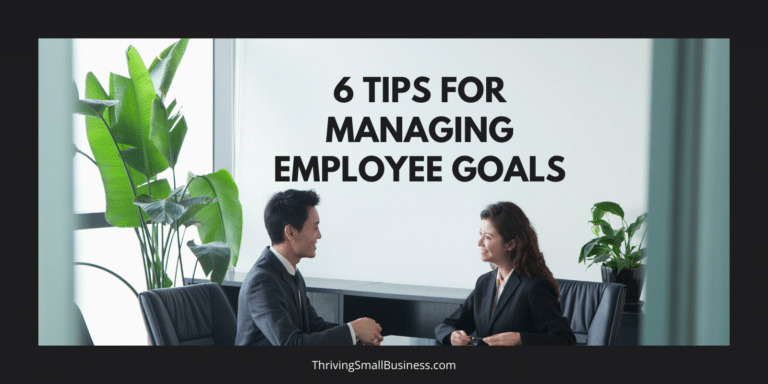5 Tips For Retaining Your Best Employees
Estimated reading time: 6 minutes
Most business owners know who their best employees are. The problem is these same business owners lose sight of the needs of those employees and inadvertently do things that cause these employees to walk out the door.
There are not many things more frustrating for a business owner or manager than to hire a new employee, train them, develop them, and then have them leave the organization for another job.
The time it takes to recruit, hire, and train an employee and the associated costs result in a very real burden for employers. Some employers must resort to employee referral programs to get workers in the door!
This is not to mention the work slowdown when a job is in transition or gearing up.
For instance, if you have a great employee who is designated to help train new employees, they are taken off of their post to train.
So, in essence, both employees are working at a slower pace than when both positions are filled with trained and seasoned employees.
This issue was less prevalent just a few short years ago when employees were grateful to have a job and willing to do whatever it took to keep it.
What Has Changed In The Job Market?
Today, the job market is much different.
Unemployment levels are at 3.6 percent – which means there are not a lot of employees available to work.
Much of this has to do with the fallout of the Pandemic and the great resignation that has occurred over the last couple of years.
Employees feel like they have choices, so they are not overly loyal to a business – unless that business knows how to treat them and shows their appreciation.
Why Are Employees Leaving?
According to a McKinsey study. The simple answer is that they can.
Employees got used to the virtual work trend, and some simply enjoyed the flexibility that came during the peak of the pandemic.
Others have figured out ways to earn a living by starting an online business.
However, there are contributing factors to the mass exodus that organizations are experiencing.
The top three reasons employees are leaving:
1. Uncaring leaders
2. Unsustainable work performance expectations
3. Lack of professional development and advancement potential
So what is an employer to do?
5 Tips For Retaining Your Top Employees
1. Foster a Culture of Engagement
Create a culture that fosters employee engagement in an effort to retain your best employees. There are many things that drive a culture of engagement:
inspiring Vision – Employees need to understand that what they do is tied to a global strategy that gives them purpose.
Clarify the vision of the organization and help employees understand how what they do impacts the success of the organization.
Consistent Communication – Employees crave communication. Always err on the side of too much. You can never communicate too often.
Supervisor Interaction – Supervisors are the primary reason employees leave employment. Invest in the development of supervisors so that they can help to foster relationships with employees.
Employee Development – Employees yearn to develop professionally. Invest in employees and consistently work to improve their skills.
Team Environment – Teams are like family. Teach team skills and help employees bond with coworkers so that they can use the momentum of a strong team to get the job done.
Culture of Trust – Trust is imperative for any strong organization. However, trust is earned. Help employees by demonstrating a strong code of conduct and teach employees that they can trust their supervisors and top management.
Clear Expectations – Employees need a clear understanding of what is expected of them. Provide a detailed job description and have performance conversations regularly.
Reward and Recognition – Employees need to be recognized for doing a good job. Rewards can be monetary or personal, the goal is simply to show employees that they are valued and appreciated.
Be proactive and figure out what employees need to feel valued.
Employee Satisfaction – At the end of the day, the way to keep employees is to ensure they are satisfied, not only with their job but with the way that job is managed.
Competitive Pay and Benefits – Pay and benefits are not at the top of the list of reasons employees stay with an organization. However, in a tight labor market, there needs to be a focus on this metric to maintain competitiveness for top talent.
2. Open Communication Process
Good communication can eliminate many organizational problems and can influence a positive work environment.
Employees have a vested interest in what challenges and successes their employer has.
Organizational leaders should make a conscious effort to share pertinent information about the organization with employees.

For example, employees appreciate hearing about customer satisfaction scores, organizational budgeting challenges, and new endeavors on the horizon.
This kind of communication makes them feel valued and increases their commitment to the organization.
3. Encourage Employee Participation
Employees devote a large portion of their lives to the organization that employs them.
Allow their involvement in problem-solving and decision-making as one way to make them feel appreciated. This involvement will give them the opportunity to influence corporate direction.
Whether it is soliciting feedback on an employee satisfaction survey or focus groups, employee input can positively affect organizational performance and help foster employee loyalty.
Some organizations are doing Stay Interviews (as opposed to exit interviews) to try and learn ways to improve how work is managed with the hope of retaining employees.
Talk to employees and try to find out what their frustrations are and work to eliminate those barriers to a committed and loyal workforce.
You never know what you will learn until you ask!
4. Provide Competitive Compensation
Organizations have learned the hard way that it is imperative to maintain competitive compensation and benefits as a way to attract and retain top talent.
However, when pay is consumed by out-of-control inflation, employees look to find ways to improve their pay.
Talk to employees about those measures that your organization is taking to keep up with the cost of living. Try to maintain good communication with employees so that they understand your commitment to keeping pay and benefits competitive.
5. Reward and Recognition
Everyone appreciates when someone acknowledges a job well done.
When employees perform well, it should be reflected in their performance appraisal, and ultimately merit increases.
Employees should also be offered promotional opportunities that are reflected in their performance appraisals.
These are important parts of a structured performance management process.
Employee contribution is validated when employees are recognized for a job well done, which makes them want to do more.
Simple rewards and recognition go a long way in making employees feel valued and appreciated.
Employers Need To Pay Attention
Don’t make the mistake of taking employees for granted amid challenging economic times. Employers need to pay attention to employee issues and keep them engaged.
This focus on employees will be the best defense against losing valuable employees to the business down the street.
Losing top talent is never easy, but it is even more frustrating to learn that there are things you could have done to prevent employee defection.
Organizations are investing too many resources in their top performers to risk losing them.
Today might be a good day to talk to your employees and revisit how you manage, communicate, and reward them.






